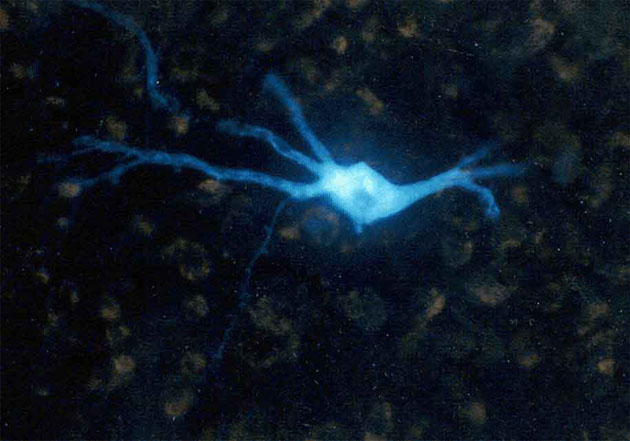|
Pictured is a dopamine neuron in the ventral tegmental area, one of the brain structures that comprises the brain reward system. The release of dopamine into the nucleus accumbens, another key portion of this circuit, produces the pleasurable effects associated with drugs like cocaine, heroin, and alcohol. Nearly all drugs of abuse exert their key effects on one or
another part of the brain reward system.
Neurons are the basic units of communication within the brain, and communications among the billions of neurons within the brain are thoughts and feelings, and the first steps to action. A neuron sends its message as an electrical pulse along its surface. The electrical pulse releases a chemical (dopamine is one of those chemicals) to carry the message across a tiny gap, called a synapse, to the next neuron. Drugs of abuse disrupt the way the brain's natural chemicals send messages and can therefore alter communications within the brain. This can change our behavior, and in the most extreme cases ultimately produce addiction. |
|
|

|
| © Copyright 2000 by David P. Friedman |
| Home | About | For Journalists | For the States | Science Update |
Scientific Process |
Science
of Addiction |
Links | Site Map |
info@addictionstudies.org